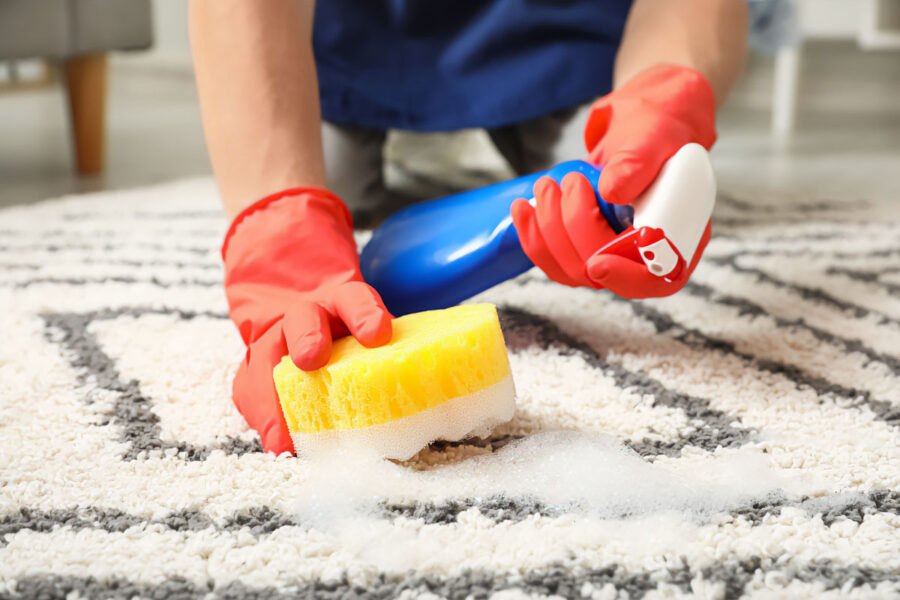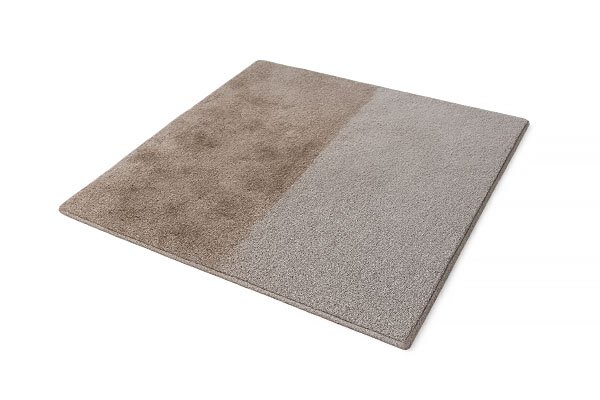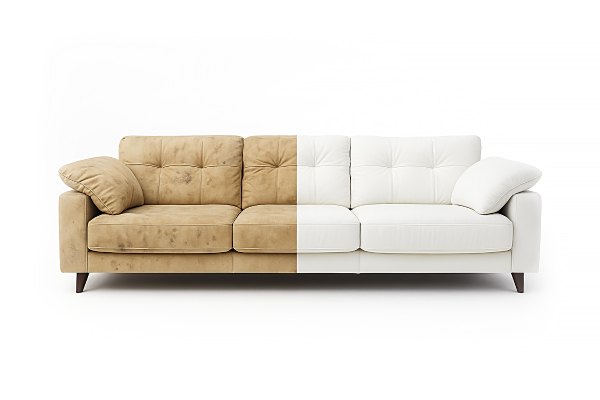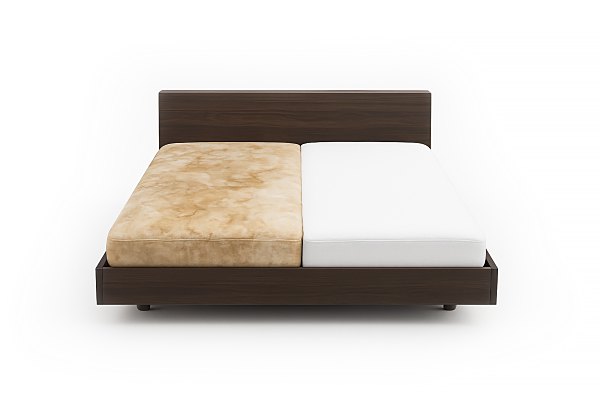Carpet cleaning seems simple enough—vacuum regularly, spot clean when needed, and occasionally do a deeper clean. Yet many homeowners unknowingly damage their carpets through improper cleaning methods. From using too much water to selecting harsh chemicals, these mistakes can lead to permanent damage, reduced carpet lifespan, and even health issues for household members.
Carpets trap dust, allergens, pet dander, and various contaminants that regular cleaning helps remove. But when cleaning turns into damaging, the investment in flooring suffers. Stains become permanent, fibers break down, and carpets may develop unpleasant odors or harbor mold growth beneath the surface.
The most frequent carpet cleaning errors include scrubbing instead of blotting stains, waiting too long to address spills, using excessive cleaning products, and not allowing carpets to dry properly. Each mistake compounds the damage, making carpets look worn and dirty despite cleaning efforts.
Professional carpet cleaners often see the aftermath of these mistakes—shrinkage, browning, residue buildup, and fiber damage that could have been avoided with proper techniques. Understanding these common errors helps protect carpet investments and maintain a clean, healthy home environment.
1. Why your carpet cleaning efforts might be doing more harm than good
Carpet cleaning aims to remove dirt, stains, and allergens. However, many common cleaning practices can damage carpets instead of restoring them.
Scrubbing instead of blotting
When dealing with spills or stains, scrubbing seems like the logical approach. This action pushes stains deeper into carpet fibers and can damage the carpet structure. Scrubbing breaks down fibers, causing them to fray and creating a worn appearance even in newer carpets.
Gentle blotting removes surface stains without forcing them deeper. Start from the outer edges of the stain and work toward the center to prevent spreading. This technique lifts the stain rather than embedding it further.
Using excessive force with cleaning equipment
Rental carpet cleaning machines often lack the finesse of professional equipment. Many homeowners apply too much pressure when using these machines, thinking more pressure equals better cleaning. This excessive force compacts carpet fibers, flattens the pile, and can damage the backing.
Professional cleaning equipment balances pressure and extraction to remove dirt without harming carpet structure. The machines lift dirt away rather than pushing it deeper into the carpet.
Skipping the pre-vacuum step
Jumping straight to wet cleaning without thoroughly vacuuming first creates a muddy mess within carpet fibers. Dry soil turns to mud when wet, making it harder to remove and potentially causing permanent staining.
- Always vacuum thoroughly before any wet cleaning method
- Pay special attention to high-traffic areas
- Make multiple passes in different directions
- Use a vacuum with good suction power
- Empty the vacuum container or bag when half full
Pro Tip: For best results, vacuum carpets at least twice before applying any cleaning solution, moving in different directions to lift embedded dirt from all angles of the carpet fibers.
Ignoring manufacturer cleaning guidelines
Different carpet materials require specific cleaning approaches. Wool carpets need gentle, low-moisture cleaning while synthetic fibers can tolerate more moisture. Ignoring these guidelines leads to shrinkage, color fading, or fiber damage.
Check the carpet manufacturer’s care instructions before cleaning. These guidelines specify suitable cleaning methods, recommended products, and cleaning frequency for the specific carpet type.
2. The hidden dangers of overwetting your carpets during cleaning
Excess moisture during carpet cleaning creates problems that extend beyond the visible surface. Overwetting occurs when too much water soaks into carpet fibers and backing during the cleaning process.
Carpet shrinkage and delamination
When carpets get too wet, the backing materials can separate from the fibers. This delamination weakens the entire carpet structure. Carpet shrinkage happens when excessive moisture causes the carpet to pull away from walls or tack strips. Once shrinkage occurs, the carpet rarely returns to its original size and position.
Proper cleaning uses minimal moisture that doesn’t penetrate to the backing layer. Professional cleaners extract most of the water immediately after cleaning, preventing these structural issues.
Mold and mildew growth
Damp carpets create perfect conditions for mold and mildew growth, especially when moisture reaches the padding underneath. These fungi develop within 24-48 hours in moist environments. Mold growth leads to musty odors and can trigger allergies or respiratory problems for household members.
Carpets should dry completely within 6-12 hours after cleaning. Longer drying times indicate too much moisture remains in the carpet and padding.
- Open windows if weather permits
- Use fans to circulate air across carpet surfaces
- Run dehumidifiers to remove moisture from the air
- Turn on air conditioning to reduce humidity
- Avoid walking on damp carpets
Quick drying keeps carpets safe and fresh. Open windows when you can. Use fans to move air around. Dehumidifiers help pull moisture from the room. Air conditioning lowers humidity. Stay off wet carpet to stop dirt sticking and slow drying.
Wicking and reappearing stains
Overwet carpets often develop brown spots days after cleaning. This “wicking” occurs when deep moisture carries soil from the carpet backing to the surface during drying. Stains that seemed removed during cleaning mysteriously reappear as the carpet dries.
Professional cleaners use controlled moisture and powerful extraction to prevent wicking. They know exactly how much cleaning solution to apply and how to remove it effectively.
Pro Tip: If using a rental carpet cleaner, make no more than two wet passes over any area—one to apply solution and one to extract it—then follow with several dry passes to remove as much moisture as possible.
3. How improper stain treatment can permanently damage your carpet fibres
Stain removal seems straightforward but requires specific techniques to avoid permanent damage. Incorrect approaches can set stains permanently or harm carpet fibers.
Using the wrong stain removal products
Different stains require different treatment methods. Using bleach on colored carpets causes discoloration. Acidic cleaners damage wool fibers. Alkaline products leave sticky residues that attract more dirt.
Identify the stain type before treatment. Protein-based stains (blood, milk) need enzymatic cleaners. Oil-based stains (grease, makeup) require solvent-based products. Water-based stains (juice, coffee) often respond to simple detergent solutions.
Heat-setting stains
Heat makes many stains permanent by bonding them to carpet fibers. Hot water extraction without proper pre-treatment can set protein stains like blood or egg. Steam cleaning without removing greasy residues first can make those stains permanent.
Always treat stains with appropriate cleaning solutions before applying heat through steam or hot water extraction. Cold water works better for protein-based stains in the initial treatment phase.
Layering cleaning products
Applying multiple cleaning products to tough stains creates chemical reactions that damage fibers and set stains permanently. Chemical interactions can discolor carpets or break down fibers.
Test any cleaning solution on an inconspicuous area first. Allow one product to work completely, then rinse thoroughly before trying another approach. Never mix cleaning products unless specifically directed.
- Blot stains immediately when they occur
- Work from the outside toward the center
- Use white cloths to avoid transferring dye
- Apply cleaning solutions to the cloth, not directly to carpet
- Rinse thoroughly after stain removal
Pro Tip: Keep a carpet stain emergency kit ready with white absorbent cloths, clear dish soap, white vinegar, and baking soda for quick response to spills before they become set-in stains.
4. Why timing matters when it comes to carpet cleaning and maintenance
The timing of carpet cleaning activities significantly impacts effectiveness and carpet longevity. Both immediate response to spills and regular maintenance scheduling play crucial roles.
Delayed response to spills and stains
Fresh spills clean up much more easily than set-in stains. When liquids penetrate deep into carpet fibers and backing, they become much harder to remove completely. Stains left untreated can become permanent within hours or days, depending on the substance.
Keep basic spot cleaning supplies accessible for immediate response to accidents. The sooner a spill gets addressed, the better the chances of complete removal without damage.
Best time of day for carpet cleaning
Cleaning carpets early in the morning allows maximum drying time throughout the day. Morning cleaning takes advantage of daylight hours for drying and allows carpets to dry completely before nighttime humidity increases.
Plan major carpet cleaning for days with moderate humidity and good air circulation possibilities. Avoid cleaning carpets during rainy or extremely humid days when drying times extend significantly.
Seasonal considerations
Spring and fall typically offer ideal conditions for deep carpet cleaning. These seasons usually provide moderate temperatures and humidity levels that facilitate proper drying. Winter cleaning in cold climates creates extended drying times that promote mold growth. Summer cleaning in humid areas presents similar challenges.
Schedule professional deep cleaning twice yearly during optimal seasons. Supplement with regular vacuuming and spot cleaning throughout the year to maintain carpet appearance and hygiene.
Pro Tip: Create a carpet cleaning calendar that includes daily vacuuming of high-traffic areas, weekly full-carpet vacuuming, monthly spot cleaning assessment, and bi-annual professional deep cleaning to ensure regular maintenance.
5. The surprising impact of using the wrong cleaning products on your carpets
Carpet cleaning products vary widely in composition and purpose. Using inappropriate products causes immediate damage and long-term problems that affect carpet appearance and longevity.
Harsh chemicals and carpet fiber damage
Strong chemicals break down carpet fibers over time. Bleach destroys color and weakens fibers. Ammonia damages wool carpets permanently. Acidic cleaners dissolve protective coatings on synthetic carpets.
Choose pH-balanced cleaners specifically formulated for the carpet type. Neutral pH products (around 7) clean effectively without damaging fibers or backing materials.
Sticky residue problems
Many cleaning products leave behind residue that attracts dirt. This residue acts like a magnet for soil, making carpets look dirty again quickly after cleaning. The sticky film also makes carpet fibers feel stiff or crunchy underfoot.
Proper cleaning includes thorough rinsing to remove all soap and cleaning agents. Professional cleaning equipment provides stronger extraction capabilities than rental machines, removing more residue during the cleaning process.
- Avoid products containing optical brighteners that leave residue
- Skip “2-in-1” shampoo plus conditioner products for carpets
- Never use laundry detergent or dish soap on carpets
- Avoid products with strong fragrances that mask odors instead of removing them
- Choose products specifically labeled for your carpet type
Leftover residue shortens the time carpets stay clean. Rinse well after washing to remove all product. Stronger gear pulls out more dirt and soap than basic machines. Always pick cleaners made for carpets. Skip anything with fake scents or added conditioners. Avoid home soaps like laundry liquid or dish soap.
Environmental and health concerns
Harsh cleaning chemicals release volatile organic compounds (VOCs) that affect indoor air quality. These chemicals can trigger asthma, allergies, and other respiratory issues. Residues left in carpets continue releasing these compounds for days after cleaning.
Eco-friendly, low-VOC cleaning products provide effective cleaning without health risks. These gentler formulations clean carpets without leaving harmful residues or affecting indoor air quality.
Pro Tip: For routine spot cleaning, try a simple solution of 1/4 teaspoon mild liquid dish soap (free of bleach, lanolin and moisturizers) mixed with one cup of lukewarm water, applied with a clean white cloth and thoroughly rinsed with clean water.
6. Common carpet cleaning techniques that professionals never use
Professional carpet cleaners follow specific protocols that differ significantly from common DIY approaches. Understanding these differences helps avoid damaging cleaning methods.
Excessive shampooing
Carpet shampoos create foam that lifts dirt but often leaves residue behind. This residue attracts more dirt, creating a cycle of increasingly dirty carpets despite regular cleaning. Over-shampooing leads to buildup that dulls carpet appearance and shortens carpet life.
Professional cleaners use low-moisture extraction methods that remove dirt without leaving residue. These techniques clean more effectively while extending carpet lifespan.
Rental machine limitations
Rental carpet cleaning machines lack the power and extraction capabilities of professional equipment. These machines often leave carpets too wet and fail to remove all the cleaning solution. The equipment may also apply uneven pressure that damages carpet fibers.
Professional equipment provides stronger suction, controlled water application, and better heat regulation. These features clean more effectively while minimizing risks to carpet integrity.
Using furniture polish or oil-based products near carpets
Furniture polishes and oils transfer easily to carpets when overspray occurs during application. These products create oily spots that attract dirt and prove extremely difficult to remove from carpet fibers.
When using any spray products near carpets, cover the floor with protective sheets. Clean any accidental transfer immediately before the substances bond with carpet fibers.
Pro Tip: If a rental machine must be used, make extra dry passes (3-4 times more than wet passes) to extract as much moisture as possible, and supplement with fans for faster drying.
7. Why regular vacuuming alone isn’t enough to maintain your carpets
Vacuuming forms the foundation of carpet maintenance but cannot address all carpet cleaning needs. Understanding these limitations helps develop a comprehensive carpet care routine.
Hidden contaminants beyond vacuum reach
Standard vacuum cleaners remove surface dirt but cannot extract deeply embedded contaminants. Dust mites, allergens, and bacteria remain in carpet fibers even after thorough vacuuming. These hidden particles affect indoor air quality and carpet hygiene.
Deep cleaning methods like hot water extraction reach these embedded contaminants. The combination of heat, cleaning agents, and strong extraction removes particles that vacuuming alone cannot touch.
Soil buildup in carpet backing
Vacuuming primarily cleans the visible carpet surface while soil continues accumulating in the backing layer. This hidden soil damages carpet structure from beneath and creates a reservoir of contaminants that gradually work their way back to the surface.
Professional deep cleaning reaches the backing layer to remove this hidden soil. Regular deep cleaning prevents the accumulation that leads to premature carpet wear and persistent odors.
- Vacuum high-traffic areas daily if possible
- Use a vacuum with HEPA filtration to capture small particles
- Change vacuum filters regularly according to manufacturer recommendations
- Make multiple passes in different directions
- Adjust vacuum height appropriately for carpet pile height
Surface vacuuming helps, but it’s not enough on its own. Dirt buried deep slowly ruins the backing. Professional cleaning digs it out before it causes lasting damage. Daily vacuuming keeps things tidy, but deeper cleaning keeps carpets lasting longer. Use good filters, clean the machine, and move in different directions for better results.
Stain and odor persistence
Vacuuming removes loose particles but cannot address stains or odors embedded in carpet fibers. Pet accidents, food spills, and tracked-in contaminants require specific treatment beyond vacuuming capabilities.
Professional cleaning includes targeted stain treatment and deodorizing processes. These specialized treatments remove stubborn stains and neutralize odors rather than simply masking them.
Pro Tip: For the most effective regular maintenance, invest in a vacuum with adjustable height settings, HEPA filtration, and strong suction power—then supplement with professional deep cleaning twice yearly.
8. How to avoid the residue trap when cleaning your carpets
Residue from cleaning products creates ongoing problems that make carpets look and feel dirty despite cleaning efforts. Understanding and avoiding this common trap maintains carpet appearance and extends carpet life.
The residue cycle explained
Cleaning product residue acts like a dirt magnet in carpet fibers. This sticky residue attracts and holds soil, causing carpets to look dirty again shortly after cleaning. Each cleaning with residue-leaving products compounds the problem, creating layers of residue mixed with dirt.
Proper cleaning includes thorough rinsing to remove all cleaning agents. Professional cleaning methods focus on extraction to prevent residue buildup.
Signs of residue problems
Carpets with residue buildup show distinct symptoms. The carpet surface feels stiff or crunchy underfoot. Carpets look dull or hazy rather than bright and clean. Rapid resoiling occurs, with carpets looking dirty within days of cleaning.
Address residue problems with thorough professional cleaning that focuses on extracting all cleaning agents. This deep cleaning removes existing residue and restores carpet appearance.
Choosing low-residue cleaning methods
Some cleaning approaches naturally leave less residue than others. Hot water extraction (steam cleaning) when done properly removes most cleaning agents during the process. Encapsulation cleaning uses polymers that crystallize and can be vacuumed away, leaving minimal residue.
- Avoid products labeled as “no-rinse” or “quick-dry” formulas
- Choose cleaning solutions specifically designed for extraction machines
- Use the recommended amount of cleaning solution—more is not better
- Make extra extraction passes without adding more solution
- Rinse with clear water after cleaning when possible
Pro Tip: When using any carpet cleaning solution, dilute according to manufacturer directions—overdiluted solutions clean poorly while underdiluted solutions leave excess residue that attracts dirt.
9. The importance of proper drying techniques after carpet cleaning
The drying phase of carpet cleaning often receives less attention than the cleaning itself, yet proper drying prevents many common carpet problems. Thorough drying maintains carpet structure and prevents health issues related to moisture.
Optimal drying conditions
Creating the right environment speeds drying and prevents moisture-related problems. Good airflow across carpet surfaces evaporates moisture quickly. Lower humidity levels in the air allow more moisture to evaporate from carpets. Moderate temperatures support efficient drying without causing rapid evaporation that can lead to wicking.
Combine multiple drying methods for best results. Open windows if weather permits and humidity outside is lower than inside. Use fans to circulate air across carpet surfaces. Run air conditioning or dehumidifiers to reduce indoor humidity levels.
Avoiding traffic during drying
Walking on damp carpets causes several problems. Foot traffic pushes soil from shoes deeper into wet fibers. Compression from walking flattens wet fibers, potentially causing permanent distortion of carpet pile. Traffic on wet carpets can also transfer soil from one area to another.
Keep foot traffic off carpets until completely dry. If walking on damp carpets cannot be avoided, place clean white towels as walking paths to protect the carpet surface.
- Position fans at 45-degree angles to carpet surfaces
- Alternate ceiling fan direction to pull air up away from carpets
- Keep doors between rooms open for better air circulation
- Avoid placing furniture on damp carpets
- Check carpet backing by touching the underside to ensure complete drying
Walking on wet carpet does more harm than most think. It grinds in dirt and flattens the fibres. Avoid stepping on it until it’s dry. If you must walk across, lay clean towels down. Let air move freely and check underneath for hidden moisture. Keep furniture off until everything feels dry.
Professional drying equipment benefits
Professional carpet cleaners use specialized equipment that significantly reduces drying time. High-velocity air movers create strong airflow that speeds evaporation. Commercial dehumidifiers remove moisture from the air much more efficiently than household models. Some professionals also use specialized floor drying systems that draw moisture out through controlled air movement.
For extensive cleaning or water damage situations, professional drying equipment rental provides faster, more thorough drying than household methods alone.
Pro Tip: To test if carpets are fully dry, press a clean white paper towel firmly on the carpet—if the towel picks up any moisture or discoloration, more drying time is needed.
Carpet and Rug Cleaning Services by SevenClean in Sydney
SevenClean provides professional carpet and rug cleaning services across Sydney, focusing on convenience, safety, and effectiveness. Their approach ensures carpets and rugs receive proper care while extending their lifespan and maintaining a healthy home environment.
SevenClean services
Comprehensive Cleaning Process
The company uses extraction cleaning methods with specialized equipment to remove embedded dirt, allergens, and stains from carpet fibers. Their process includes pre-inspection, spot treatment for stubborn stains, deep cleaning, and proper drying techniques to prevent moisture-related issues.
SevenClean employs eco-friendly, non-toxic cleaning products from trusted brands like PROCHEM, CHEMSPEC, KARCHER, and KIEHL. These products effectively clean while remaining safe for households with children and pets.
Service Features
All cleaning services take place at the client’s home at convenient times. The technicians arrive with professional-grade equipment that provides superior cleaning compared to rental machines. Their extraction technology removes nearly all stains in most cases, though they honestly acknowledge that some deep-set or dye stains may not be completely removable.
The company guarantees the cleanliness, safety, and improved appearance of carpets and rugs after service. Their cleaning methods not only address visible dirt but also remove hidden contaminants like dust mites, bacteria, and allergens that affect indoor air quality.
Additional Services
Beyond carpet and rug cleaning, SevenClean offers upholstery cleaning for furniture and mattress cleaning services. Their upholstery cleaning uses specialized techniques suitable for different fabric types, removing stains and odors without damaging materials.
Their mattress cleaning service follows similar principles of safety and effectiveness, using extraction methods with specialized cleaning agents to remove sweat, blood, and spilled drink stains. They can also perform deodorizing treatments using aromatic products to eliminate unwanted odors.
By choosing SevenClean for carpet, rug, upholstery, and mattress cleaning, Sydney residents save time and effort while ensuring their home furnishings receive professional care that maintains their appearance and extends their useful life.
Conclusion
Proper carpet cleaning requires knowledge, appropriate techniques, and sometimes professional expertise. The nine common mistakes discussed highlight how well-intentioned cleaning efforts can damage carpets when done incorrectly. From overwetting to using harsh chemicals, these errors not only fail to clean carpets effectively but can permanently damage them.
Avoiding these pitfalls starts with understanding carpet materials and appropriate cleaning methods. Gentle blotting rather than scrubbing, prompt attention to spills, and using the right cleaning products for specific stains all help maintain carpet appearance and structure. Regular maintenance that combines proper vacuuming with periodic deep cleaning extends carpet life significantly.
The timing of cleaning activities also plays a crucial role in effectiveness. Cleaning during optimal weather conditions, allowing sufficient drying time, and addressing spills immediately all contribute to successful carpet maintenance. Creating the right drying environment after cleaning prevents mold growth, odors, and carpet damage from lingering moisture.
For many households, combining regular DIY maintenance with periodic professional cleaning provides the best results. Professional services like those offered by SevenClean in Sydney use specialized equipment and techniques that reach deep into carpet fibers and backing to remove contaminants that household methods cannot address.
By understanding and avoiding these common carpet cleaning mistakes, carpets remain attractive, hygienic, and functional for many years, protecting the investment in home flooring and creating a healthier indoor environment for everyone.





